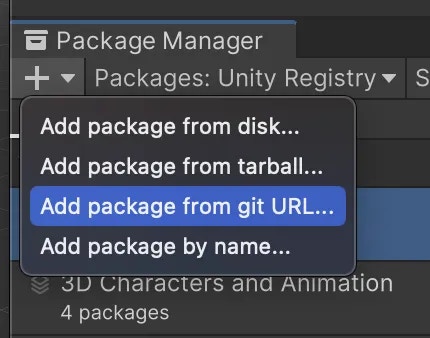The rive-unity package is currently in Technical Preview for macOS and Windows. We’re hoping to gather feedback about the API and feature-set as we expand platform support.
Example Projects
To quickly experiment with rive-unity, run one of our example projects.Installation
The rive-unity package is available to install from GitHub. You will need a Unity editor that supports OpenGL or D3D11 for Windows, or a Mac with ARM64 (M1, M2, etc) architecture. On Mac with ARM64 you do not need to configure anything. To manually update select either D3D11/OpenGL for Windows, or Metal for Mac/iOS as the Graphics API under Edit -> Project Settings -> Player in Unity. You can install the Rive package for Unity by opening the Package Manager and adding it as a git dependency, for example (replace0.0.0 with the latest release):
0.0.0 with the latest release):
1
Open Window -> Package Manager
2
Choose Add package from git URL…
3
Add the URL with version tag

Given the changing nature of the Rive API and the way that Unity reloads packages, Unity may crash during package upgrades. To avoid this, use the following method to upgrade package versions.
Packages/manifest.json file (replace 0.0.0 with the latest release):
Adding a Rive file to Unity
See our documentation on Exporting real-time content. Once you have a.riv file, you can simply drag it into the Unity project window, which will automatically create an Asset object,. On our Marketplace, you can find Rive content that can be remixed and used in your project.
Displaying a Rive File
Drag-and-Drop To display a.riv file, you can drag the asset into the scene hierarchy to create a fully configured screen-space panel setup within a uGUI Canvas.
The
com.unity.ugui package must be installed to use these components. This is usually included by default in new Unity projects.Rive > Rive Panel- Creates a standalone panelRive > Rive Panel (Canvas)- Creates a UI-ready panelRive > Widgets > Rive Widget- Adds a standard Rive widgetRive > Widgets > Procedural Rive Widget- Adds a procedural widget